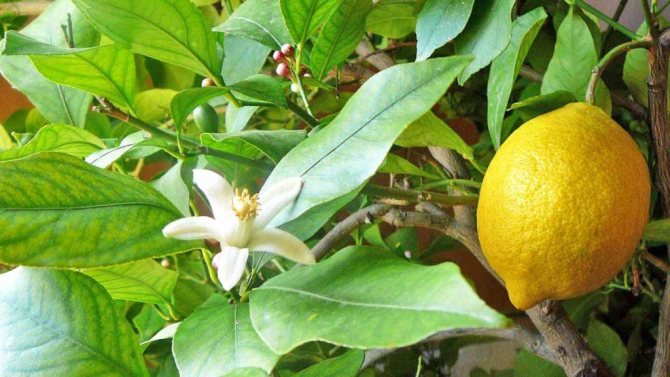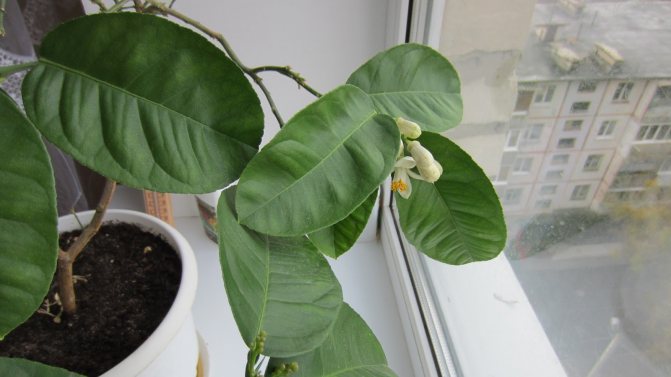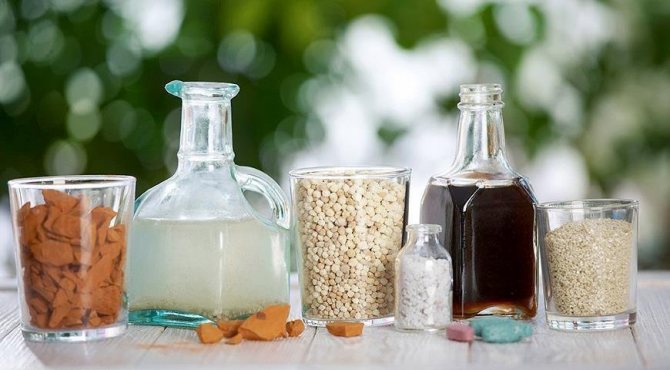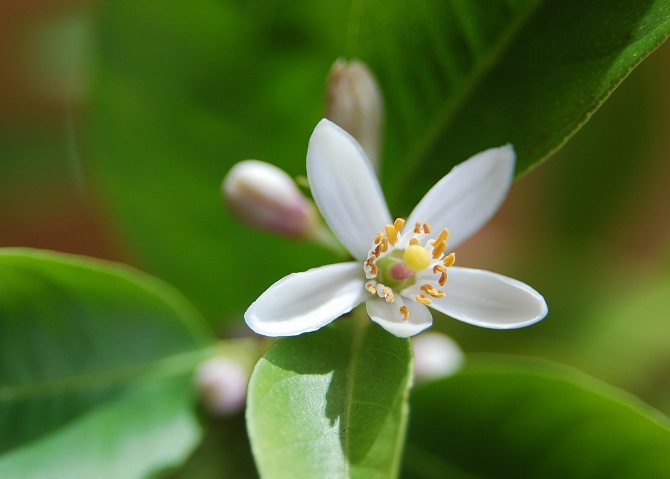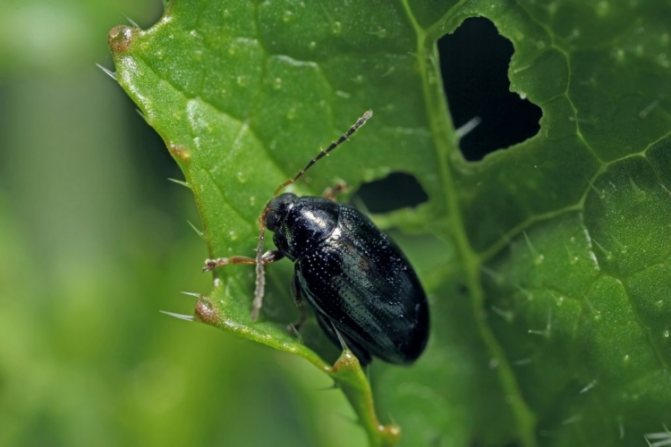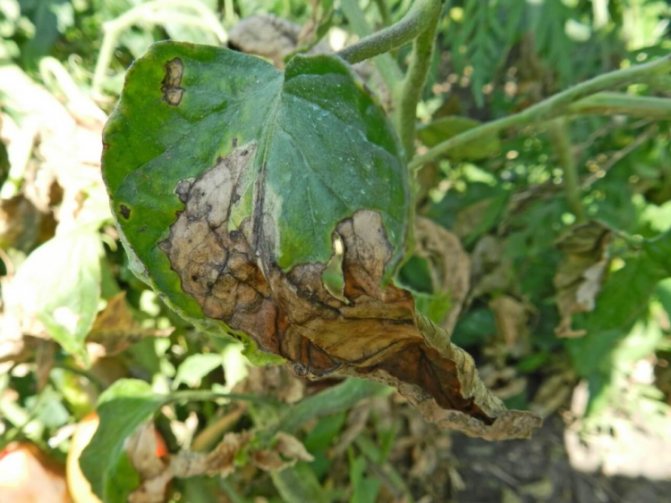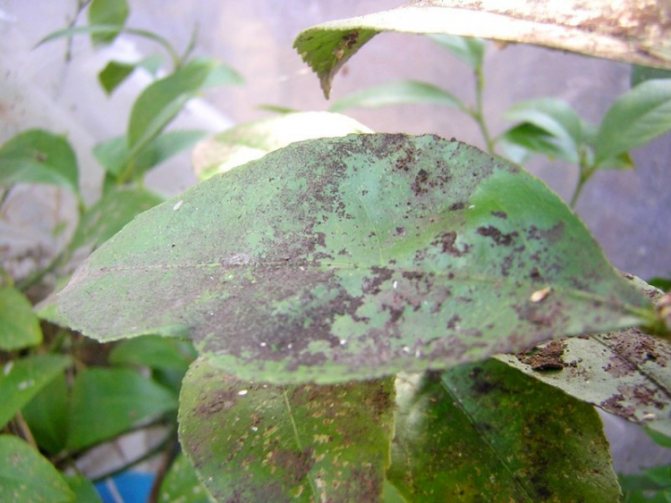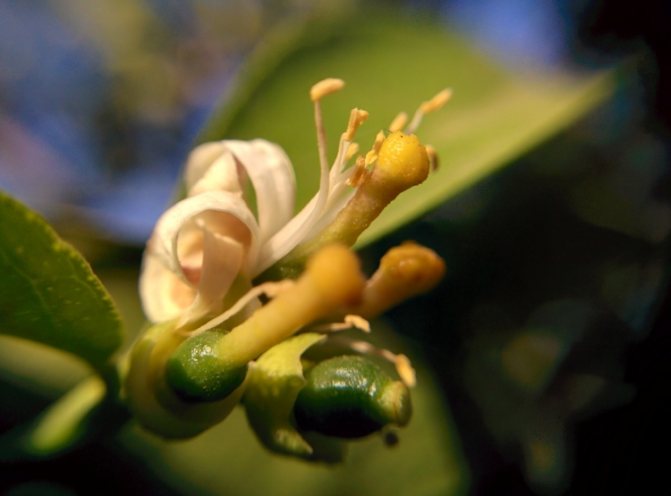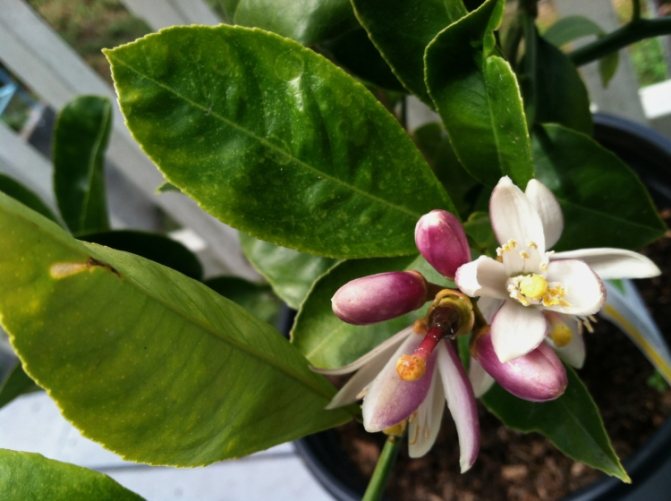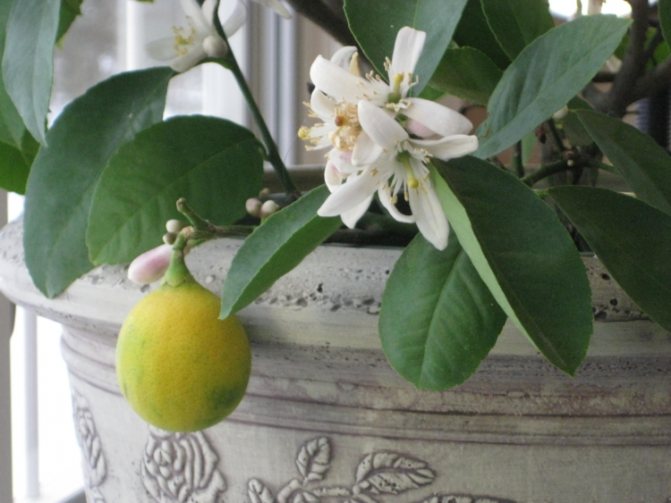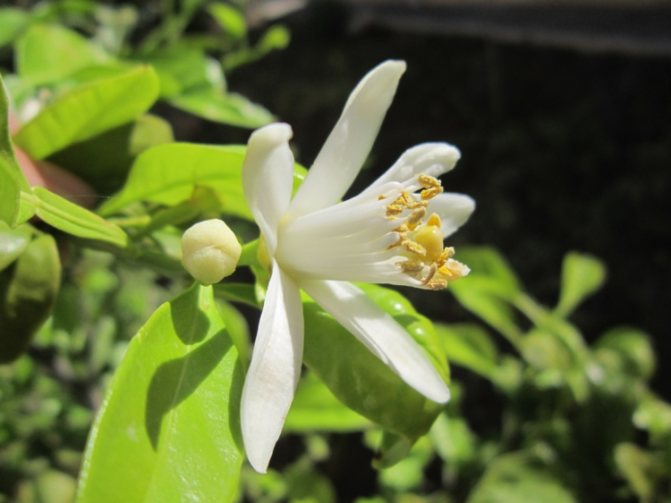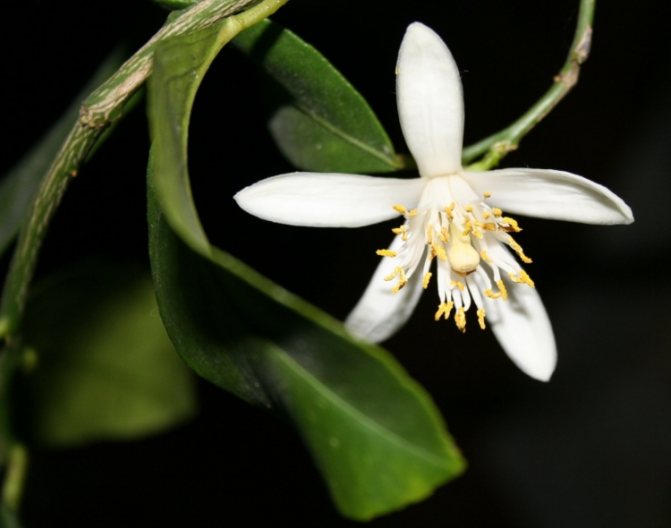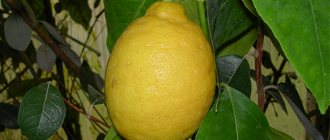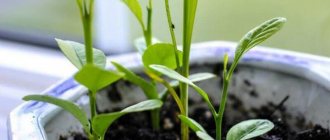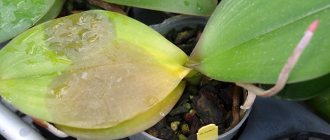Houseplants not only decorate the house, but can also become a real wonder in a green corner. Lemon is a beautiful flowering tree that bears healthy fruit. From one healthy tree, you can get a dozen lemons in a year. Why doesn't lemon bloom at home? A question that worries both people with experience and beginners who first planted a fruitful ornamental tree at home. There are few reasons why inflorescences did not appear on the lemon. The problem should be looked for in the external environment or among possible diseases, after which the tree slowly fades.
Why does the lemon not bloom and bear fruit?
There may be several reasons why the lemon tree does not form flowers and does not bear fruit. It is necessary to understand well whether mistakes have been made in the care, and also whether pests have appeared on the tree.
Wrong vaccination
If the seedling was grown from a stone, then you should not expect a harvest and flowering from it. A fruiting lemon must be grafted. For these purposes, mainly the Meyer and Dioscursia varieties are used, which are capable of producing crops as early as next year. The stock can be a seed-grown orange or a grapefruit.
Incorrectly selected temperature mode
Lemon does not tolerate temperature fluctuations. With sharp changes in it, the plant can bloom profusely, but then lose color. It is recommended to grow a tree at a temperature of +20 - +24 ° С. Heat negatively affects its growth and development, and especially in a closed room.
Insufficient moisture
The lemon tree loves a humid indoor climate. Otherwise, flower buds will not form at all or will crumble. To humidify the air, use special devices or simply install an open vessel with water in the room. Also, the plant is regularly sprayed.
Abundant flowering
There are times when the lemon blooms but does not bear fruit. Experts recommend normalizing the number of flowers by removing the excess ones. If there are a lot of them, then the tree will lose a lot of strength and there will be no more of them left for the formation of ovaries. You can determine how many flowers to leave by counting the number of leaves on the plant. For every 10 leaves, 1 flower is left.
Lack of vitamins and minerals
During flowering, lemon requires good nutrition, high in vitamins and minerals. They come with top dressing.
If you do not fertilize the soil, then the tree sheds color and does not form ovaries.
Diseases and pests
Lemon, like other houseplants, can be affected by pathogens and pests. During the flowering period, fungal infections are considered the most dangerous. To prevent their appearance and development, it is necessary to control the level of humidity and normalize watering. Of the pests, the plant affects:
If the tree is sick, then it will not bloom, much less form an ovary. It is necessary to take urgent measures to destroy pests and pathogenic flora, to make lemon healthier. Only then will he be able to please with abundant flowering.
Regular and sufficient watering
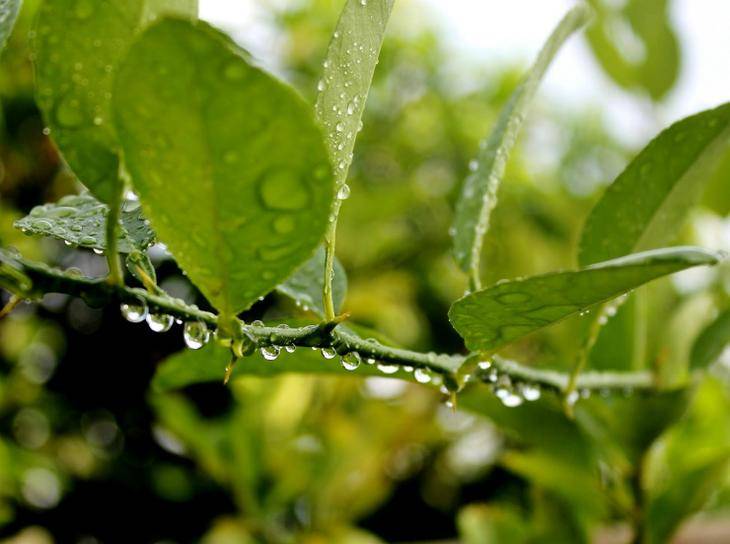
Waterlogging adversely affects the development of a citrus plant, so moderation is important when watering. In the heat, the soil in the pots is moistened 3 times a week; on ordinary days, the frequency of watering is reduced to one or two times.
How to tell if it's time to water a lemon?
There is a simple test - take a pinch of soil from a pot with three fingers and squeeze. If it sticks together, then you don't need to water; if it decays, it's time to go for a watering can.
Irrigation water should be warm and settled (filtered). The ideal option is melt water, which is obtained from pure snow or after the ice has melted. Rain or spring water is no less good. Three to four times a month, you can add drunk tea to the water for irrigation.
Avoid stagnant water in the container - the containers used must have drainage holes.
Loosen the topsoil in the pot a couple of times a month (just be careful not to damage the roots!). It will be easier for the oxygen to flow to the roots and the lemon will grow better.
A native of the tropics, lemon loves to take a shower - regularly spray the plant with a spray bottle and wipe the leaves with a soft, damp cloth. In general, I advise you to turn such water procedures into a weekly ritual.
If your lemon is next to a central heating battery, then to eliminate dry air, I recommend turning on an electric humidifier in the room (a regular bowl of water can also serve as a replacement for it).
How to make lemon blossom and bear fruit?
What if you want to see the homemade lemon bloom and enjoy its healthy fruits? It is necessary to stimulate flowering, provide proper care, improve the health of the tree and eliminate possible mistakes in care.
Vaccination and feeding
If the grafting is done correctly, then the indoor lemon will be able to please the owners with the harvest in 3 years. The most commonly used method of inoculation with an eye. The stalk is grafted only if the branch contains a small number of leaves. You can perform this action in the split or behind the bark. The work is carried out during the period when active sap flow begins in the lemon. This usually happens in April or May.
For the rootstock, mature seedlings are used, which have thick branches, the bark from which moves well from the wood. The growth should contain about 5 leaves. To make the operation go well, use a clean and very sharp knife. A strong alignment is achieved by tightly tying the grafted lemon. If after 3 weeks the petiole of the leaf at the eye turned yellow, then the vaccination has taken root successfully. Failure in this matter can be overtaken in the case when the bark is poorly separated from the wood.
Cultivating a lemon tree in an enclosed space requires proper feeding.
The amount of fertilizer must be properly dosed and applied to the soil. During the flowering period, the plant is fed 2 times a month, and in winter, the application of drugs is reduced to 1 time per month. Well suited for growing citrus organic and humic fertilizers. There are natural dressings that contain a complete set of essential trace elements. To achieve abundant flowering, they must be introduced from February to August.
Read also Woodlice herb medicinal properties reviews
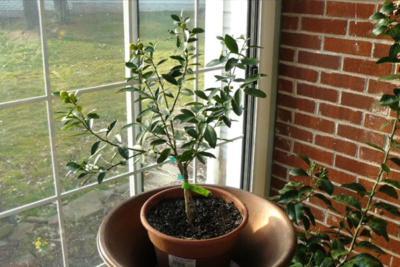

Lemon is an unpretentious and thermophilic plant that came to us from southern countries. Not a bad option for growing at home, as it does not require serious maintenance and blooms easily at room temperature. Lemon can be easily grown from a seed that is simply planted in the ground. They do the same with cuttings.
However, in order for the plant to bear fruit, you need to be able to properly care for it. It is about leaving, in more detail, will be discussed in the article.In it, future or current lemon tree owners will be able to find answers to all their questions and have a healthy lemon at home, which will certainly bear fruit. It is important not to forget that every plant needs care and attention. Without them, they tend to die soon enough.
Lemon does not tolerate sudden temperature fluctuations
I started growing a lemon tree a few years ago, when I got carried away with indoor Pavlovsky lemons. A stalk of lemon was given to me by my acquaintances.
I planted the donated stalk in a pot of sand, created a favorable microclimate for the lemon for rooting. Soon, the cutting successfully started and started to grow. Each spring, I transplanted the developing lemon into suitable larger pots.
This lemon grew up to a meter in height, with a very spreading crown - it didn't even fit on the windowsill ... I had to transplant such a large plant into a 10-liter galvanized bucket, making holes in the bottom of several drainage holes.
I carefully looked after the lemon in the house, regularly moistened its leaves. And now, after 2 years, my lemon bloomed for the first time - I was so glad! However, all the flowers of the lemon soon fell off, never forming ovaries ...
The next year, the lemon bloomed again. Then I suddenly remembered how my mother manually pollinated the flowers of plants. And I decided to do the same with my lemon. After artificial pollination of the lemon flowers, the first fruits began to form. But here again failure: only three ovaries did not fall off and began to develop further.
My first lemons ripened for exactly 9 months - until they turned yellow and fell off themselves. I didn't pick the fruit on purpose. I waited for how long they would ripen, and what mass they would gain. The lemons from my tree tasted the same as those purchased in the store. And they weighed about 150g each.
Inspired by such success, the next spring I put the lemon on the balcony. I thought that there would be more favorable conditions for this light-loving and heat-loving plant here than in the house. Indeed, my lemon bloomed profusely on the balcony, and a lot of ovaries on the tree then formed. But then autumn has come. And when I brought the lemon into the room, all its leaves and fruits fell off. My tree has dried up ...
At that time, I could not understand why my lemon suddenly died, completely healthy and fruiting. Then I read the reason for this in the library book. It turns out that the lemon tree does not tolerate sharp fluctuations in the temperature of the content. Therefore, when transferring a plant to the garden for the summer or placing a lemon on the balcony, when autumn approaches, you need to carefully monitor the weather. If there is a threat of a cold snap, it is necessary to bring the tree into the room in advance so as not to expose the lemon to a dangerous temperature shock.
Hope that my experience of growing lemon will help other citrus plant lovers avoid a similar mistake.
Valentina Lysenko
What does a lemon tree need?
Light, temperature and humidity are the main conditions for growing a citrus tree. It is also possible to create favorable conditions for lemon at home.
Health and immunity
Viruses and bacteria are one of the causes of tree disease. Some of them are insect-borne, others spread through the air and can grow in a plant pot due to lack of oxygen. Weakened immunity is the most common disease of homemade lemon, and the person himself is often to blame.
Main reasons:
- Poor quality soil.
- Unfavorable conditions such as high temperature or humidity.
- Improper watering and / or fertilization.
Correct conditions of maintenance and care
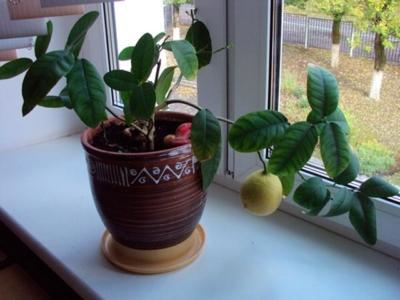

- Lemon prefers long daylight hours - for this it is necessary to correctly position the tree in the apartment (for example, east or west windows).In winter, the plant should be placed closer to the window and illuminated with a phytolamp for 5-6 hours a day. In summer, the tree should not be exposed to drafts and direct sunlight.
- The plant does not tolerate heat. The optimum temperature in room conditions is from 18 to 20 ° in summer and 12-15 ° in winter. Lemon does not tolerate sudden changes in temperature, therefore, during the winter dormant period, the tree can be watered with lukewarm water.
- In the room where the citrus is located, the air must be well humidified, for this the room must be systematically ventilated, and a container with water must be placed next to the plant.
Homemade Lemon Care: Warm + Light + Consistency
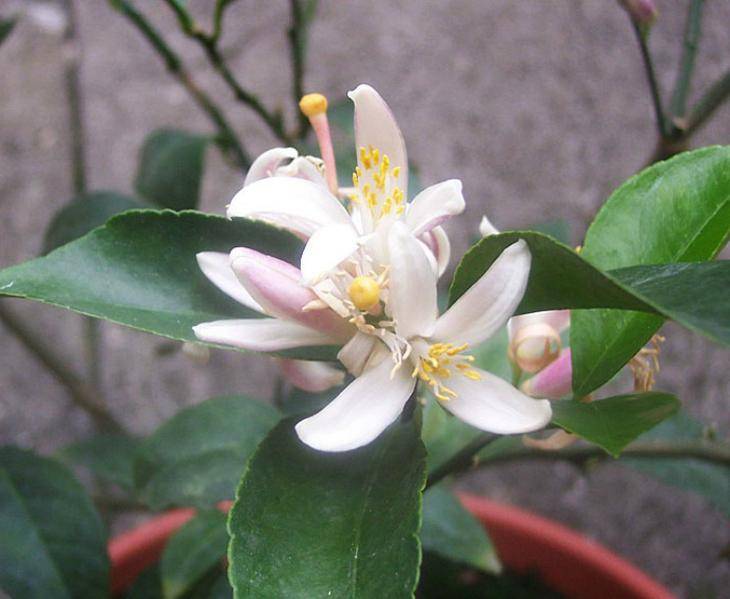

The indoor lemon is distinguished by its wayward character, which is manifested in its exactingness to the conditions of detention.
In particular, he does not tolerate sudden changes in temperature, humidity and reacts painfully to a draft. A moderately humid and warm microclimate and abundant lighting are essential for the well-being of your green pet.
Just don't place the pot in direct natural light, as lemon also doesn't like to fry in the sun. For example, you can put a plant on a southern or southwestern windowsill and shade it with a tulle curtain or gauze.
An interesting fact - the lemon does not like the neighborhood with strong-smelling house flowers, so do not put lilies or rhododendrons next to it.
In autumn, winter and early spring, homemade lemon needs additional lighting using LED or fluorescent lamps (at least 40 watts). On average, it is enough to turn on the lamps for 3-4 hours a day (2 hours in the morning and 2 hours in the evening). However, it should be borne in mind that a lemon plant needs at least 8 hours of sunlight or artificial lighting in winter and from 10 to 14 hours at other times of the year.
Lamps are installed at the rate of 2-3 pieces per square meter. Moreover, they should be located at least 40-50 centimeters above the level of the highest branch.
Flowering and fruiting times
Many people wonder when the indoor lemon should begin to bloom and bear fruit. It turns out that it can bloom already in the first year of life, however, it is recommended to cut off the flowers in buds, since flowering greatly depletes the young plant and can destroy it. It is recommended to allow fruiting when the tree already has at least 20 leaves.
Himself the period from the beginning of flowering to fruiting takes 6-8 months(depending on the variety) while maintaining the necessary conditions. Homemade lemon blooms twice a year - in winter and autumn. After planting, the tree will be able to please with fruits only after three to four years.
With proper care, homemade lemons can flower and bear fruit for about 40 years. The main factor in the life of a plant is your concern, since the life of a tree can always be extended with the help of air layers, cuttings and grafts on other plants.
Why ovaries do not appear
The lemon tree always stands out against the background of ornamental plants, and fresh fruits can be harvested and eaten by the whole family. The culture bears fruit already in the second year, after a person has properly planted a cutting and fertilized the soil. Taking care of a tree includes many activities that are carried out throughout the year, and it is difficult to understand all the diseases of the lemon or the causes of wilting. What if the first inflorescences did not appear on the green branches?
It is necessary to find out the cause of the disease and eliminate it. The problem of a fruiting tree can arise at any time of the year with both a young plant and an old tree that has always borne fruit. The reasons that affect the correct growth of the lemon are either temporary or permanent. Changes in care or fertilization often lead to a sharp deterioration in the condition of the tree. Withering leaves, the absence of inflorescences, or the appearance of small bitter fruits are alarming signals for the grower about the appearance of serious problems.
Why does the plant at home fail to yield?
There can be several reasons for the absence of homemade lemon fruits, for example:
- If citrus is grown from seed, the plant must be grafted and allowed to wait for several years before flowering begins.
- Pests and bacteria.
- Dry air or high humidity.
- Poor soil, lack of fertilizers and minerals.
Improper care
However, the main reason why indoor lemon does not bear fruit is the wrong conditions for keeping the plant:
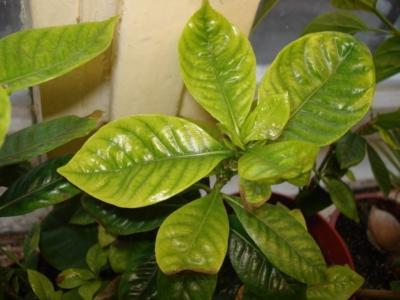

- High or low room temperature. The optimum room temperature for growing a lemon tree is 18 to 20 degrees Celsius.
- Improper watering. You need to water the lemon regularly, with previously settled water, so that all the chlorine can disappear from it. In summer and spring, 2 times a day, in winter - 2 times a week. Choose room temperature for irrigation.
- Lack of fertilizers. Homemade lemon is fertilized during the active flowering period from March to September, once or twice every two weeks, otherwise the tree will lose color. During winter dormancy and in the presence of diseases, the plant should not be fed.
- Incorrect location and lighting. Lemon is recommended to be placed closer to sunlight. An excellent option would be rooms with windows facing west or east; an insulated loggia is also suitable.
Read also Do-it-yourself volumetric leaf crafts
But it should be borne in mind that citruses are afraid of drafts, especially during flowering. In the hot season, the tree must be shaded. It is unacceptable that the sun's rays enter the plant, this will lead to leaf burns. Wrong ground.
- It is better to prepare the soil yourself (earth, leaf humus and sand in equal proportions).
- Do not cover different parts of the soil in layers.
- The soil should be loose, without lumps.
- Drainage can be added to the soil to provide oxygen to the roots.
- The acidity level of the soil is not more than 7 (pH = 7), determined using an ionomer.
- The soil must be fertilized regularly.
- Once every two years, the citrus tree is transplanted with a complete replacement of the soil.
- Poor pollination. Lemon fruiting will occur without any intervention on your part. If you want to get a bountiful harvest, you need to use a cotton swab to shake the pollen from the stamens onto the pistil.
It is worthwhile to proceed with caution, as there is a great risk of damage to the flowers. The procedure should be repeated in the next couple of days. The tree can bear fruit with or without pollination, but in the latter case, no seeds are formed in the lemon fruit. Too abundant flowering. A large number of flowers takes a lot of energy from the plant. It is necessary to periodically remove excess ovaries so that the citrus can bear fruit.
Features of citrus care
Blooming lemon needs special care, different from the conditions of keeping the plant during the dormant period. Citrus bloom lasts about 7 days. During this time, an inflorescence is formed on the branch, consisting of 5 or more flowers.
But the fruits from this are not tied in bunches, because most of them are male, and their role is reduced to pollination of the female flower. It is easy to determine which flower forms the ovary, and which one is needed only for pollination, because they have a different structure.
Male flower stalks do not bloom immediately, but at different times. This is because the female shoot is not immediately ready for fertilization. Flowers of different sexes do not need to be thinned out.
The budding period of indoor citrus, under proper indoor conditions, begins at the end of February. Favorable conditions include:
- nutritious soil;
- abundance of sunlight;
- stable temperature.
How to get vaccinated?
There are two ways to graft a citrus tree:
Inappropriate conditions
In addition to adhering to agricultural technology, caring for a lemon means providing it with good conditions. Otherwise, he will not please you with a single flower.
Unsuitable soil. If the land where the tree was planted is strongly acidic or alkaline, your pet begins to wither and lose flowers. In order to determine the acidity of the soil, it is enough to use a litmus test. If this really was the problem, you need to give it a slightly acidic reaction.
Lack of sunlight. This plant is very thermophilic, therefore it needs a sufficient amount of sunshine for optimal development. You shouldn't expect beautiful flowers without it. It is best to place it on a window that faces south or southwest.
In the summer, when it is hot enough, it is recommended to take the tree out to a glazed loggia so that it receives a sufficient amount of sun, but at the same time is not exposed to drafts, which can also worsen its condition.
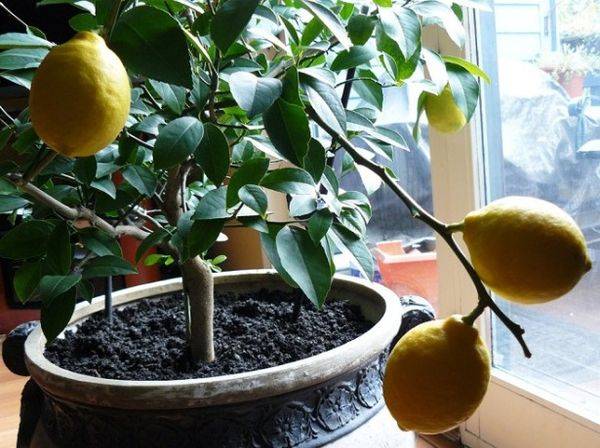

And remember that it is better not to expose your pet to direct sunlight - this is fraught with sunburn, and then you will have to think about how to reanimate the poor plant. Then you don't have to ask why the lemon does not bloom.
Watering with cold water. Flowers and trees are usually watered with warm water. The lemon tree is also no exception to the rule - pouring cold water on it will nullify all the tree's attempts to bloom.
A sharp change in conditions of detention. The sudden change of scenery has a detrimental effect on this citrus tree. For example, you decided to rearrange your pet in the sun, although before that he was always in the shade. Or they took out a houseplant outside without hardening it before that. Naturally, if the change of scenery occurs so abruptly, the tree simply does not have time to adapt to new conditions. It is because of this "stress" that it can stop blooming. Therefore, if you decide to change the conditions of detention, do it gradually so as not to provoke stressful situations.


Could the age of the crop be the reason for the lack of yield?
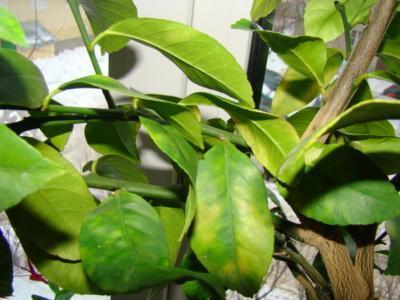

An old lemon may not give fruit for the same reason as a young one - improper conditions of detention.
The lemon tree lives and actively bears fruit up to 40-50 years, the main thing is to take care of him correctly.
A young plant, on the other hand, will not bear fruit for the first few years. A grafted lemon grown from a cutting under the right conditions will give its first fruits in 3-4 years, and one that sprouted from a stone may not bear fruit even after 10 years.
Improper care
Florists proudly plant a lemon tree. Such a plant requires a lot of care and grows for more than one year before it begins to bear its first fruits. Improper housing conditions or pests prevent the tree from growing and bearing fruit. Why doesn't the lemon bear fruit? If the lemon has not bloomed, several probable reasons for this negative phenomenon should be considered:
- poor watering;
- insufficient amount of sunlight;
- lack of vitamins or mineral fertilizers;
- incorrect plant transplant.
Before starting a fruitful tree that can be placed on a windowsill, it is worth studying the conditions for keeping citrus for its rapid and correct growth.
The lemon tree does not need daily maintenance. Lemon loves sun and moisture, but only in limited quantities.
Improper watering
The lemon will not bloom or will abruptly drop the color that has already appeared if the person has not properly organized the watering of the plant. Over-watering harms the root system, and hot weather causes green leaves to wither quickly.But a dry earthen lump is the worst thing that can happen to the soil in which the lemon rhizome grows. A moisture-loving plant needs constant moisture not only in the soil, but also in the green part of the tree. Experienced growers irrigate the leaves with a spray bottle at least once a week.
A tree that does not receive enough moisture sheds its buds so that they do not take the last moisture from the stems. After the buds, foliage immediately falls off. By such characteristic "symptoms" it is easy to understand what is the reason for the fallen inflorescences. The opposite situation can be observed in those cases when a person literally floods a pot with a plant with a lot of water. Due to excess moisture, the soil thickens and the roots can no longer absorb water. Rotting roots and fallen buds are difficult to salvage.
Unsuitable fertilizer
Problems with fruiting are often associated with the choice of fertilizer. To make a recharge for the root system with your own hands or buy ready-made fertilizers - the choice remains with the grower, but the quality of the selected substances depends on how the lemon will bear fruit.
Caring for a tree without fail includes fertilizing the soil at any time of the year. Citrus plants need constant nourishment, otherwise their root system will weaken. A bad rhizome prevents new buds from growing and a good tree does not produce any fruit. The best option is to feed the tree twice a month and water it regularly several times a week. In winter, the amount of fertilizer is reduced, because all processes of the lemon slow down.
To strengthen citrus, complex fertilizers are needed, which are easy to buy in specialized stores. A strong root system will allow the tree to bloom in due time, and soon the person will be able to harvest the first crop.
Lack of sunlight
Disrupted lighting is a common reason for the absence of flowers on lemon stems. Without good lighting, inflorescences simply do not germinate. It will be possible to correct the situation if you rearrange the tree to another window sill with better natural lighting. In the cold season, special lamps are installed around the lemon. In the summer, the pots are taken outside, but they are left where there are no drafts. Covered balconies or balconies are suitable for airing the plant in the summer.
Can a lemon tree be made to bloom or not, and how?
Adequate grooming contributes to the proper development of the lemon tree. There are several ways to make a plant bloom:
- Extreme conditions can be created. For example, make a short cut or slightly damage the bark of the lemon tree by tapping it with a stick or other object. You can also hang a small weight on vertical branches so that the branches take a horizontal position. In this case, the tension in the bark will promote flowering in a stressful situation.
- Crown formation. At home, it is recommended to form a flat tree. To do this, you need to cut and gently break off the shoots to the windowsill. After the dimensions of the window opening and the crown become the same, pinching or even trimming is carried out. With this type of crown, the lemon will feel great and will be able to give a good harvest. The main thing is to have time to form the crown before the beginning of fruiting.
- Pulling branches. The branches need to be pulled together with soft wire at the beginning of sap flow - in order to concentrate nutrients in them, which will be useful during the next flowering. In November, the plant is freed from the garter.
Violation of agricultural technology
Caring for a room lemon is a rather painstaking business, you must follow certain requirements and rules in order to see how your pet blooms. The easiest way to make mistakes in agricultural technology, and in this case, you may not see a blooming lemon. Let's take a closer look at why lemon does not bloom at home.
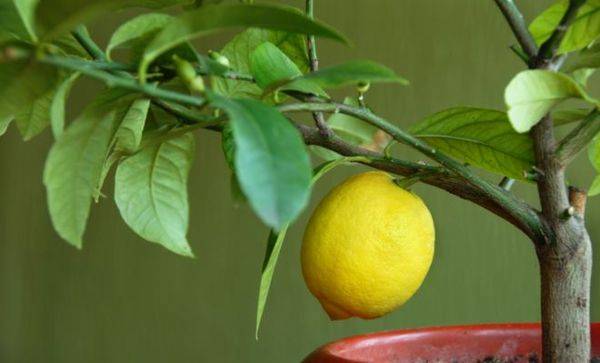

Improper watering. Lemon will not bloom unless it is properly watered. This plant is very fond of moisture, therefore, when the soil dries up, it is able to get rid of the buds (if this happened during flowering) or even fruits that are quickly tied. All this it does in order to compensate for the missing resources. Therefore, it is better not to allow the earthen coma to dry out.
However, it is also not worth pouring water over the tree, it is no less harmful. These actions lead to compaction of the soil in the pot, in which case the plant is no longer able to extract nutrients from it.
How to make lemon blossom in this case? To avoid moisture problems, it is recommended to always keep the soil in a slightly moist state. It is also recommended to spray the tree from time to time to maintain the humidity at the proper level.
Untimely transplant. It may seem to some that it will be enough to transplant the lemon once - immediately after purchase. However, it is not. Since the plant is quite demanding in terms of keeping conditions, it will need regular replanting every year for the first three years. In the future, the plant is transplanted no earlier than once every few years, and they do this before flowering begins and the fruits set.
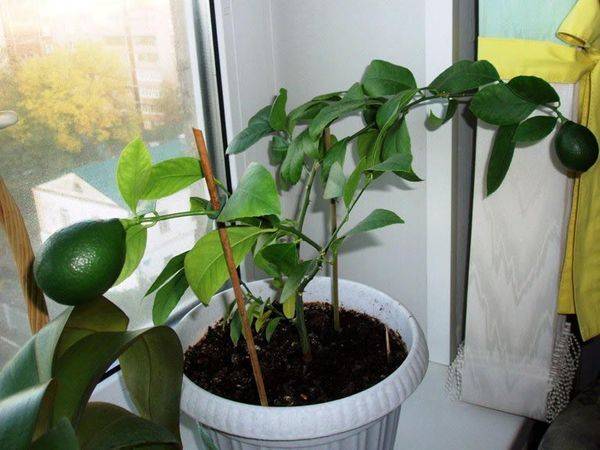

In general, during the period that the tree will be in a new pot, it will have time to take root there, and settle in a new place. Therefore, when transplanting, simply pick up a larger pot for him, the earthen lump in which he grew before can be left. Naturally, if this is not done on time, your pet is unlikely to bloom in crowded conditions.
Reasons for the loss of ovaries
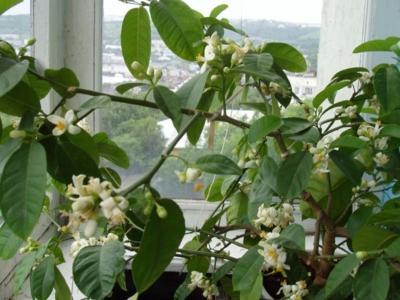

There are several reasons why the plant blooms violently, but does not bear fruit.:
- Inappropriate temperature and lighting.
- Tree age - the lemon may be too young to bear fruit.
- Too poor soil, lack of complementary food and fertilizers.
- Inconsistency in the number of flowers and leaves (one flower for two dozen leaves; the rest are cut off in buds).
- Dry soil or, conversely, overflow.
- Improper pollination (gently transfer pollen from bud to bud with a cotton swab).
In this way, it is quite difficult to make lemon blossom and bear fruit at home, but interesting. If you follow all the above recommendations and take seriously the cultivation of a plant, it will surely thank you with exuberant flowering and many fruits.
If you find an error, please select a piece of text and press Ctrl + Enter.
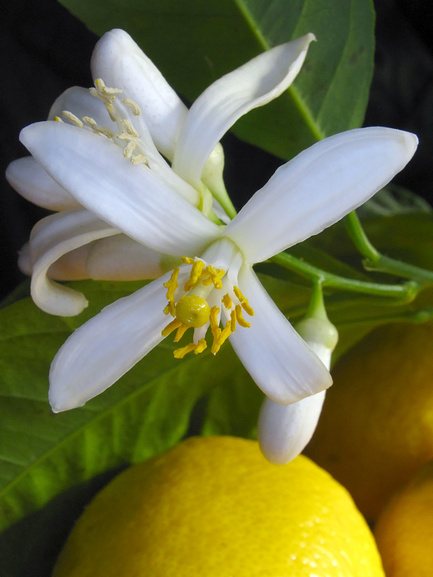

- How to make lemon bear fruit
- How to water a lemon
- How to care for lemon at home
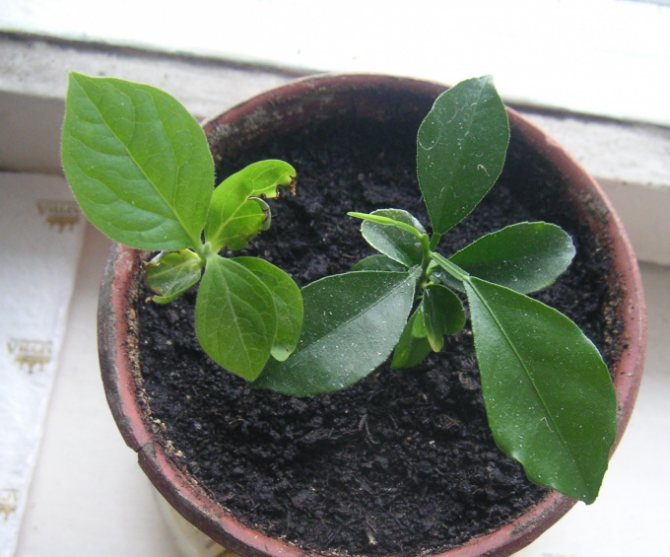

- - stalk,
- - pots,
- - root growth stimulant,
- - sand,
- - film or can,
- - spray gun,
- - a container with water to humidify the air,
- - slurry,
- - sawdust,
- - ash,
- - mineral dressing,
- - Styrofoam or thermal insulation material.
Lemons do not like drafts, transfer from one place to another, and over-watering in winter.
If, during flowering and fruit formation, you often move the pot with lemon, the tree will drop both leaves and ovaries.
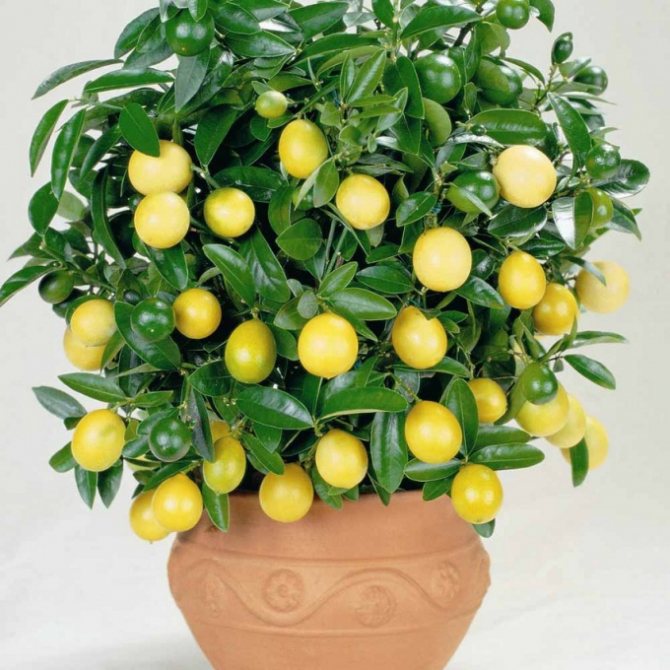

Conditions for flowering
Lemons are classified as subtropical plants, therefore, in order to achieve fruiting at home, they are provided with conditions similar to natural ones. Only a seedling that has reached the age of 3 years will be able to make it bloom and bear fruit.
But not all indoor citruses bloom. A seedling that has undergone budding and received a cutting from a fruiting plant blooms and begins to bear fruit earlier than the one grown from a seed at home.
Lemons bloom if you follow the requirements for their cultivation:
- Providing daylight hours more than 12 hours. For this, the pot is placed on a windowsill facing the south or southeast side. On the north side of the house, the seedling will neither bloom nor develop properly.In some cases, fluorescent lighting is allowed.
- Warm water with mineral fertilizers dissolved in it contributes to the formation of the correct crown and the appearance of flower buds. Citrus is watered twice a day, and on hot days it needs additional spraying.
- High humidity. During bud formation, the seedlings are sprayed with warm water. This is done carefully, trying to avoid droplets getting into the sinuses. The spray left on the leaves is also harmful. The foliage can be burned.
If the lemon does not bloom
To make a lemon bloom, which has borne fruit earlier and stopped blooming at home, it will turn out, providing the plant with:
- Space. A pot of citrus fruits that do not bloom is placed separately from other plants, because in natural conditions a lemon is a spreading tree.
- Trimming the crown. The procedure begins to be carried out already in the first year of a lemon's life, and continues throughout the entire growth period. At the first stage, the indoor seedling is shortened so that 4 buds remain on it, and the main trunk rises no more than 20 cm above the ground. After that, the plant will begin active growth of shoots, on which there will certainly be flower buds.
- Transplant. The reason for the lack of flowers is an unsuitable pot. That is why plants that are in no hurry to bear fruit should often be transplanted into large containers. In pots, it is required to provide good drainage.
Pests can also interfere with the setting of buds and the flowering of lemon. They undermine the health of the seedling, and instead of fruiting, citruses fight for life. Before carrying out the above procedures, treat the tree from late blight, soot fungus, mold, as well as living parasites. For the fight, traditional agricultural products are used: broad-spectrum fungicides, Bordeaux mixture or insecticides.
Lemon Blossom
Lemon is essentially an evergreen that blooms several times a year. Flowers have a very pleasant smell, and the number of petals is limited to 5 pieces. Bright yellow fruits originate mainly on branches that are not lower than the fourth level. Fruits appear on short branches - pods.
A ripe fruit can remain on the branches of the plant for two years, first changing color to green, then back to yellow-golden. Indoor lemon trees, unlike ground ones, have a thin peel. Despite the fact that these lemons have less seed, they are much more aromatic. When properly cared for, indoor lemon trees will bloom and delight you just as much as the trees in your garden.
When and how to replant homemade lemon
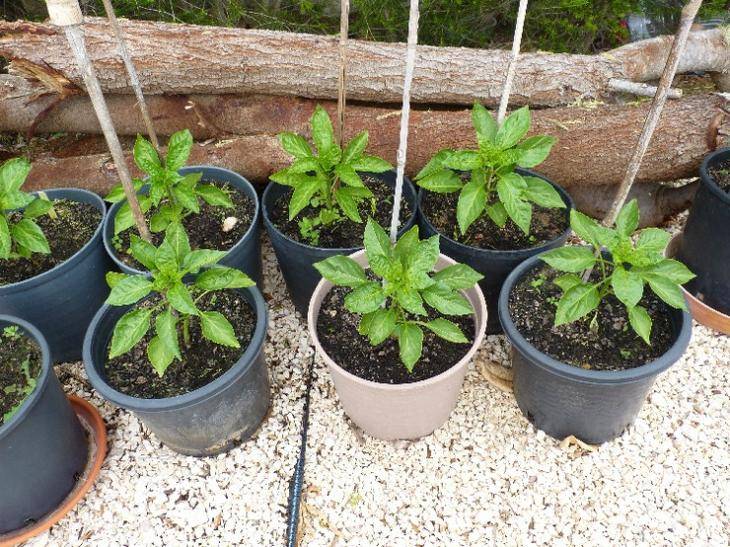

With good care, the lemon tree "rushing" literally before our eyes. Until 10 years old, the lemon is transplanted once a year, then the plant is transferred to a more spacious pot every 2-3 years.
To do this, choose a container 5-7 centimeters wider and deeper than the previous one. Since the roots of citrus plants need a lot of oxygen, it is better to choose containers made of breathable materials, for example, clay or wood, for transplanting.
The optimal time for a lemon transplant is June; in the cold season, this operation is performed in February.
When composing a mixture for transplanting a lemon, the age of the plant should be taken into account. For young lemons, a light soil mixture is better, and for older plants, a denser one, with a high clay content.
Here are some soil mix options for indoor lemons of different ages:
- Plants up to 4 years old: leafy soil, mature manure, high moor peat, fine river sand (1: 2: 1: 0.5).
- Plants from 4 to 10 years old: sod soil, leafy soil, high-moor peat, lake silt, river sand (2: 1: 1: 1: 0.5).
- Plants over 10 years old: sod land, leafy soil, high peat, lake silt, coarse river sand (3: 1: 1: 2: 0.5), ash from combustion of straw at the rate of 200 grams per 10-liter bucket of earth.
It is good to enrich any of the mixtures with 100-200 grams of granular superphosphate per 10 liters.
With each transplant, up to 50% of the length of the taproot is removed from the plant. The remaining roots are also shortened by 1.5-2 centimeters and immersed in a slightly pink solution of potassium permanganate for 5 minutes. For disinfection, you can also powder the cut with wood ash.
How to properly care for lemon at home
Caring for an indoor lemon tree has several differences from caring for a tree from the garden. One of the differences is the flowering time. Most indoor lemon trees flower and bear fruit throughout the year. This is especially true for lemons such as Mayer and Lisbon. But if, for example, you grow a lemon of the Eureka variety in a mild coastal climate, then it can also bloom and bear fruit all year round.
Lemon flowers, usually of both sexes, are arranged singly, in pairs or in small clusters, they are quite large: 4-5 cm in diameter. The bud development period lasts 5-6 weeks, after which the flowering period begins: 7-9 weeks. The period of growth and development of fruits from the ovary (falling of the petals) to the beginning of ripening in indoor conditions during the spring flowering period can last up to 230 days.
In summer, there is better lighting and optimal air temperature, so the term for fruit development can be reduced to 180-200 days. If, in the first year of life, a young, recently grafted tree “throws out” flowers, they must be picked before they bloom. This will allow the young plant to conserve its strength and preserve them for further proper development.
At the second flowering, the buds are no longer removed. Often, the tree itself decides how many fruits it can "feed" and how many "extra" flowers it needs to shed. It is recommended to allow a lemon to bloom if it has at least 20 full healthy leaves.
Every time a lemon tree is in bloom, you need to pay serious attention to watering. Lack of water can cause flowers to fall off. A potted lemon tree needs watering when the topsoil is 3 to 5 centimeters deep. It is necessary that the soil in the pot is constantly well moistened.
Post-flowering care
After completing the flowering process, the plant needs to be looked after more responsibly.
Care procedures:
- Regular watering. Lemon flowers form an ovary, and in order to maintain it, you will have to water the plant as the topsoil dries up. For convenience, cover the soil at the base with black spandbond with a high degree of water permeability, and vinegar is added to the water itself for irrigation. For 1 liter of liquid put 1 tbsp. l. product.
- Top dressing. A fruiting tree will need to be fed with a complex mineral preparation intended for introduction into the soil before and after the flowering of the citrus tree. It is better if the fertilizer contains nitrogen. The accompanying components should be phosphorus, potassium, sulfur, calcium and magnesium. Good results are obtained by preparations based on humate.
- Abundance of light. The citrus pot on which the fruits appeared should not be rotated and rearranged from place to place. The slightest change in the usual conditions is fraught with the fact that the ovary will disappear.
- Lack of drafts. For a tree, it is preferable to choose a place that is well protected from the movement of air masses. Do not leave the pot by the open window. Strong winds have a detrimental effect not only on citrus flowers, but also on fruits.
Lack of vitamins and minerals
It is imperative to feed your pet - after all, for full growth and development, it needs the nutrients that it receives through regular feeding. Fertilize the tree twice a month (during the active growth phase), and make a short pause for the winter.
The reason why the plant may either not bloom, or begin to shed fruits that it has already set, is the lack of manganese and boron. You should compensate for the lack of these elements by purchasing citrus mixes in stores.
The main reasons for the lack of fruiting in a young tree
Plant growth and fertility depend on environmental factors and the care that citrus is provided by humans. Lemon fruiting is the result of good care and attention from the florist. The reason for any negative changes should be sought in what kind of water the lemon is watered and when it is transplanted. The quality indicators of soil and fertilizers determine the appearance of the tree.
Vaccinations
Incorrect grafting can be another reason for the lack of inflorescences on the stems. Pitted lemon does not produce fruit even in the most favorable conditions. A plant grafted with cuttings bears fruit from the third year. Do not expect pitted lemon to yield a good harvest.
This type of ornamental tree blooms but does not bear fruit. The number of fruits on a tree depends on how the grower coped with the most important task of cutting off excess inflorescences. The more flowers appear on the stems, the smaller the future lemons will be. Useful substances and moisture are evenly distributed throughout the tree, therefore, as soon as the plant blooms, it must be cut off.
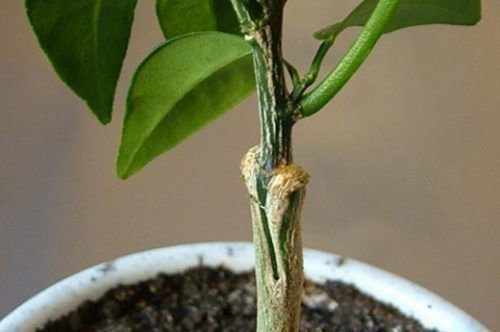

The grafting must be correct, otherwise the yield will decrease.
Temperature and humidity
If the lemon bloomed, but then all the flowers crumbled, you need to look for the problem in the temperature regime and the level of humidity in the room. Even a beginner who expects to harvest a good harvest in the near future should learn how to make a crop bear fruit or plant. Lemon blooms, but does not bear fruit, what to do? You need to look for reasons at home while the plant can still be helped.
Comments (12)
Sofia
07/13/2017 at 00:21 |
I have no problem with lemon blooming, but the difficulty of keeping these flowers and ovaries. Often the ovaries begin to dry after a while and fall off, and then the lemon begins to shed its leaves.Reply
Julia Expert Plodogorod
01.07.2019 at 21:56 |
Hello Sofia! Quite often, lemon ovaries fall off as a negative reaction to a change in scenery. For example, if you rearrange the plant or even just move it, then the already set fruits will certainly crumble. Even ate the care all the previous time was correct.
The reason for the described reaction is the change in the level of illumination. Even small changes provoke stress in the plant.
If the lemon tree is young enough, it can also cause buds and ovaries to fall off. In this case, you should not worry, it happens quite often.
If we are talking about an adult specimen, it probably does not have enough strength to ripen the crop due to poor soil, that is, a lack of nutrients in the soil. Lack of light and moisture can also lead to the problems described.
If, in principle, a lot of fruits have set, most likely the plant will get rid of them, since it simply cannot provide normal ripening for all of them.
Sometimes a slightly different situation is observed - the lemons remain, but the foliage falls off. This is a dangerous condition for the plant. It can die. We recommend that you feed your pet with a complex mineral remedy without delay.
If your plant releases buds from time to time, but the crop cannot be obtained in any way, you need to adjust the care.
To begin with, you need to check if nutrients are being introduced sufficiently. If feeding is carried out regularly, it is worth replanting the lemon in a new substrate. Be sure to check the acidity of the soil. A suitable level is slightly acidic.
Watering is carried out as the soil dries out. Usually, in the warm season, about 3 waterings per week are required. This plant also responds well to spraying.You can also put a container of water next to it to ensure a sufficient level of humidity.
These plants and shadows do not like. Suitable lighting is diffused light without direct sunlight.
In addition to the above, we recommend standardizing the ovaries. On a young tree, it is worth removing all the buds. On an adult, if there are a lot of them, leave only a part. The fewer ovaries remain, the higher the likelihood of ripening.
Reply
Igor
07/30/2017 at 01:01 |
At home, a lemon that was grown from a seed has not bloomed for 10 years, and as a result, it disappeared. If a cultured kidney was immediately grafted into it, then, in the third year, lemons would already appear.
Reply
Julia Expert Plodogorod
01.07.2019 at 22:39 |
Hello Igor! Whether a plant grown from a seed will bear fruit depends on many factors. But, even if all the required conditions are met, fruiting can be expected no earlier than in 5-7 years.
You are absolutely right, if you plant a lemon tree, you can get a harvest much sooner. You can try to plant several seeds at once, then it will be more likely to get fruit.
If you can grow a healthy plant from the seed, you can propagate it by cuttings. It is believed that the lemon trees obtained in this way give a harvest faster and more readily.
You need to take planting material only from a flowering lemon. Therefore, if your pet has never bloomed, you can specially buy a cutting. It is best to carry out such work in early spring.
For rooting, you need to pour a drainage layer on the bottom of the container, then light fertile soil, and sand on top. Before planting cuttings, it is better to leave them in a solution of a root formation stimulator for a day.
It is better to create a greenhouse effect by covering the container with an already planted plant with a film, bag or bottle. In the shelter, it is imperative to make several holes so that the stalk does not suffocate. Also, once a day, it is worthwhile to carry out full ventilation.
The optimum temperature is 23-25 degrees. The plant needs to be sprayed with warm water every day. In the first 10-15 days, it is better to carry out this procedure several times a day.
After successful completion of rooting, new young seedlings should be transplanted into a permanent pot. It is important to keep the lemon in a shaded place for the first 12-15 days. It is necessary to accustom him to the light gradually.
Reply
Anna
09/14/2017 at 13:38 |
I have a young tree, too, and is not going to bloom. I didn’t know much, I got information from the article. I will try to follow all the recommendations. I am sure now that my lemon will bear fruit!
Reply
Anna
17.07.2018 at 14:44 |
The lemon was grown many times, only a few attempts were successful, the tree bore fruit, but care must be constant, this is very important! Recently we went on vacation, and upon returning, all the lemons fell, the leaves were very dry, apparently during the departure period it was standing under the sun for a long time and it was all dry on one side, it was of course very insulting. So it is not worth leaving it unattended for a long time, but the smell in the room from lemon is the most pleasant, so even without flowering and fruit, the plant will delight.
Reply
Alexander
09/29/2018 at 10:24 |
I had a large-fruited lemon, the record holder weighed 1.3 kg. Therefore, he left a maximum of 3-4 fruits. Propagated by rooting under a jar, it turned out in water. The main thing is not to be indifferent to the tree (it grows, well, let it grow). He needs more attention, constant care. And believe me, the lemon will delight you with good harvests.
Reply
Julia Expert Plodogorod
01.07.2019 at 23:04 |
Hello Anna! As you rightly noted, this plant needs attention. Lemon in a pot requires a lot of moisture. Therefore, watering should be regular. The correct watering regime is one of the most important components for the successful cultivation of the described tree.
A good time to moisturize is morning or evening.Although watering is carried out as the soil dries in a pot, it should not be complete. The leaves should not be allowed to wrinkle, and the branches begin to droop and wither.
If this happens, you can make several holes in the ground, for example, with a thin wooden stick. Then the water will be absorbed faster. You can also bathe the plant in the shower, because the necessary moisture is also absorbed through the leaves. It is important that the entire earthen lump is saturated with water, and not just the upper layers.
In order not to harm the tree with an accidental drought, we recommend that you follow this rule: water a room lemon when the soil in its pot has dried out by about 3 cm.You can check this by lowering a wooden stick into the soil, and then feeling it.
It is important that there are enough holes in the bottom of the pot in which the tree grows for the outflow of excess moisture. As well as a high-quality drainage layer of sufficient thickness.
If your plant is on a windowsill or balcony, that is, practically in outdoor conditions, watering may be required every other day or even every day.
It is important to pour in the liquid slowly, otherwise moisture will simply flow out through the drainage holes, without sufficiently saturating the roots. You can do the procedure in several steps, little by little.
Although the described plant loves water, the potted soil should not be soggy all the time, this will contribute to the development of rot and fungus. As for the amount of moisture, you need to water until some water appears on the sump.
For plants that are outdoors in summer, you can use mulching, for example, with peat. If you need to leave the plant alone for a long time, you can use a drip irrigation system for indoor flowers. This will keep the substrate moist without overflowing.
Reply
Dana
01.07.2019 at 15:23 |
An interesting article, I liked the nuances and secrets of flowering. I also planted a lemon from the seed, it grew a little bit with me, released the leaves. But as soon as I put it on the balcony, it instantly disappeared.
Reply
Julia Expert Plodogorod
01.07.2019 at 21:34 |
Hello Dana! There are several reasons why a lemon could die in the described situation.
If earlier the plant stood on a window with diffused light, and was not used to the sun, then the flower could get burned. For this reason, foliage could fly around. Full photosynthesis and respiration stopped, which contributed to the deterioration of the flower.
There is a chance that he would start to build up green mass again. If this did not happen, most likely, some other negative factors were present.
If the balcony is open, that is, the plant was practically on the street, then the reason for the problems is that there was no proper adaptation period. The plant cannot be abruptly transferred from home to outdoor conditions. They should slowly harden, weathered, even if the temperature is about the same.
We recommend that you start adapting the flowers from a few hours. At the same time, you need to carefully monitor their condition. If your pet begins to wilt, you need to move it to a comfortable and familiar environment.
If the container with lemon stood in a draft, it also badly affected the health of the plant. The same goes for the wind. Indeed, for a domestic resident who is not accustomed to such cataclysms, this is a serious blow to immunity.
The problems described are likely to undermine the health of the plant. Pests that appeared on the flower, or some kind of disease, probably led to death, because harmful spores are often carried by the wind.
If the plant first shed its leaves and then dried up, it may have been struck by a spider mite. We recommend, just in case, to disinfect the pot and the place where it was located. Also, take a look at your home flowers. If there is a thin cobweb somewhere, you need to wash the plant, and then start treatment.
You can spray with a solution of ash and soap, or use one of the specific preparations, for example, Neoron.
Houseplants often die from fungal, putrefactive diseases. Therefore, if the plant got sick and could not be saved, we recommend finally examining its stem and rhizome. Softened and rotten roots, the presence of spots indicates the indicated lesion.
In the described case, it is also worthwhile to carry out prevention for other domestic plants. This can be done by watering them with Fitosporin or Magnicur.
Reply
Irina
06.08.2019 at 15:56 |
And how to germinate a lemon seed correctly, which one is better, what kind? I planted several times, lemon and orange, they did not germinate. Does the time of the year matter for germination?
Reply
Julia Expert Plodogorod
08.08.2019 at 14:24 |
Hello Irina! The main problem in the cultivation of pitted lemon is the low germination of seeds. This is due to the fact that seeds from freshly harvested fruits germinate well, and those lemons that are found in a store or in the market could lie on the counter for a month, or even longer.
You can also try to collect seeds from lying citrus fruits. Germination in this case will be worse, and the plants will germinate much more slowly. But, nevertheless, even from such planting material, you can get a full-fledged plant. It is important to choose a ripe lemon with no signs of mechanical damage or disease. Indeed, sometimes the skin of purchased citrus fruits is affected by mold.
We recommend planting not one bone, but 8-10. Then the likelihood that it will turn out to grow a lemon will increase. Also, quite often lemon trees suffer from diseases, damaged during grafting. If you leave a few copies, there is a better chance that one of them will get stronger and live to the fruiting age.
You can start preparing by preparing the soil. You need to take forest or garden soil, sand, peat and rotted humus. The substrate should be loose and light. After the soil mixture is ready, it should be roasted in the oven, and then allowed to stand for about a week before planting the seeds.
It is convenient to use cups. There are both disposable, in which you need to additionally make holes for drainage, and special containers. For example, seedling glasses work well.
At the bottom, you can put some sawdust or buckwheat husks. The cups are filled with soil three quarters, moisten it with warm water, make a hole 1-2 cm deep. Before planting, the seeds can be treated with a biostimulator. After the bone is laid in the hole, it must be sprinkled with loose earth and watered a little.
Further, it is better to cover the containers with a film or a bag to create a greenhouse effect. It is necessary to air the plantings every day. It is worth moistening as the soil dries up.
It usually takes two weeks to a month and a half for seedlings to germinate. When the plants are still young and weak, you can not clean the greenhouse, and gradually accustom the tree to the new microclimate.
Seedlings obtained under such conditions adapt much better to room conditions than those obtained by cuttings. From seed-grown lemon trees, you can even wait for fruiting. But, this happens quite late, at the age of 4-5 years.
It is best to plant from mid-spring to early summer.
Reply
How to feed a plant during flowering
To determine the number of flowers that can be left on a tree, simple calculations are carried out. There should be only one bud per 10 leaves. If the grower does not prune the extra buds, the plant will become weak and soon discard the entire ovary, and not just part of it. Lemon should be fed more during intense flowering. Mineral and organic fertilizers alternate in spring. Top dressing is carried out every three days.
Lack of nutrition is one of the most common reasons why the ovary does not develop on the stems.If the inflorescences managed to emerge, but immediately fell off, the problem should be looked for in the quality and amount of moisture.
Excessive watering leads to a similar picture - the rhizome cannot absorb water due to the swelling of the soil. The root system begins to rot, and the ovary falls off. It is not worth waiting for a harvest from a tree that does not receive enough moisture. If the ovary still survives the unfavorable period, the fruits will be bitter and small in size.
Lemon transplant and propagation
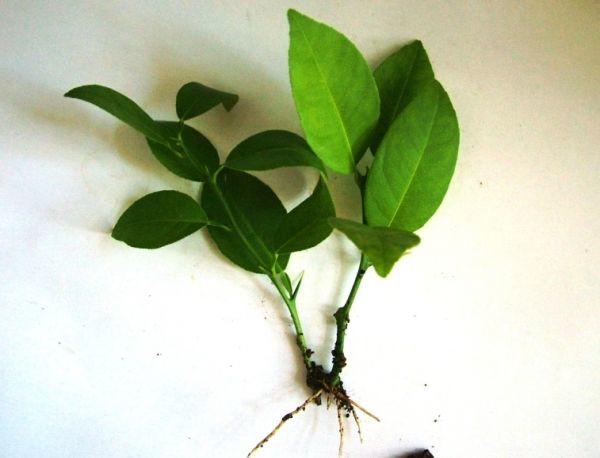

Lemons grow well from seeds. It is necessary to collect good, fully formed and ripe seeds, place them immediately without drying in a nutritious soil, or you can also treat it with a root growth stimulator for fidelity. They germinate in 2–4 weeks. In order for this small plant to grow into a lemon, you need to be patient, take care of it for more than 10 years before receiving fruits, and many owners, after many years of caring for their trees, do not see fruits at all.
But a plant that was grown from a seed adapts more easily to home growing conditions, grows healthy and strong. It is often used as a rootstock for grafting varietal lemons.
Citrus fruits are propagated by rooting cuttings and layering, these methods allow you to preserve the characteristics of the mother plants, which cannot be said about sprouts from seeds.
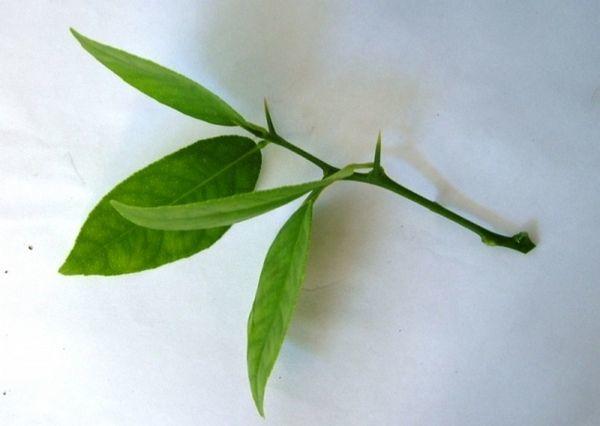

Young plants are transplanted annually, choosing a pot 5–8 cm wider than the previous one. You can't take a large pot right away - the extra earth will rot. Plants are transplanted very carefully by transferring the entire earthen coma into new dishes with an obligatory drainage layer, then fresh soil is poured. Adult plants, whose roots do not grow so quickly, are transplanted after 2-3 years, but they change the top layer of the earth every year. Stop enlarging the pot when it reaches 10 kg.
How to plant plant seeds: highlights
Some active citrus growers with rich experience advise freeing the seed from the upper husk, which, in their opinion, allows you to get seedlings in the shortest possible time.
This must be done very carefully, since any damage to the seed can lead to the fact that the germination of the seed will never occur.
But you can plant bones without the above procedure.
Lemon seeds must be moist before planting. It is advisable to soak them for a day in water or in a solution of sodium humate. You can buy this growth stimulant at any botanical store.
But even if the seeds were planted without soaking, and as soon as they were removed from the lemon, they will most likely sprout.
Next, you need to find a suitable small, shallow pot or glass, pour earth into it. There should be holes in the bottom of the pots. They are important so that excess moisture, due to which the roots of the sprouts may die, flows down.
Make holes in the bottom of the pot, fill with small pebbles, soil
Put 1.5-2 cm of expanded clay, small pebbles or very coarse sand on the bottom of the pot. You can buy soil for planting at the store, or you can prepare it yourself. To do this, you need to mix garden soil, sand, humus and a little charcoal.
It is better to plant seeds to a depth of no more than 1.5-2 cm. It is important to moisten the soil before planting. It should not be dry, but excessive moisture is also undesirable.
The pot can be covered with plastic wrap. The air temperature in the room where the pit pot is located should be above 18 ℃.
It is necessary to spray the soil once every 2-3 days. If the ground has become completely dry, then you can water it a little. After the first shoots appear, the film must be removed.
It is better to rearrange the pot with sprouts in a bright place and water with settled or rain water, at room temperature.
The first shoots will sprout no earlier than 3-4 weeks after planting.
According to experienced citrus growers, the best time to plant a lemon is late winter, early spring.Since the increasing daylight hours will only benefit the young sprouts that have appeared.
Lemon gets sick if you do not follow the rules of care. If the tree is watered a little, it will dry out. If the soil in the pot is oversaturated with moisture, then yellow leaves will appear on the lemon, and this will be a sign that the roots of the tree are beginning to rot.
Also, the appearance of yellow spots on the foliage, after which the leaves dry and fall off, indicate that the tree does not have enough iron.
The dying ends of the leaves indicate that the tree needs phosphorus. And the lack of potassium and manganese leads to wrinkling of the leaves and falling off of the ovary.
Knowing how to grow a tree is not enough; it is important to be able to care for it. If a pest is noticed on the plant, it is necessary to figure out what kind of parasite it is and urgently take measures to combat it.
Below are some common parasites that can attack a home-grown lemon:
- Mealybugs, popularly known as "hairy lice" - on a tree they can be recognized by a white bloom. They prefer dry conditions, they are afraid of moisture. A good prevention of this parasite is to regularly rinse all the lemon leaves.
- Scale - small shiny droplets appear on the leaves, sticky to the touch. Leaves dry and fall off. Soapy or garlic water is used against this pest. Soapy water is prepared as follows: 2 tablespoons of liquid soap are dissolved in 1 liter of water. The resulting mixture is treated with the affected tree. An hour after the procedure, they are washed under the shower. It is desirable to repeat the treatment after 2 days.
- Spider mites are small, light dots on the leaf plate. The leaves are curling up. A cobweb is visualized on their back. If this parasite is found on the lemon, it is necessary to treat the tree with sulfur. For prevention purposes, the lemon is washed under running water, paying more attention to the underside of the leaf plates of the tree. Spraying with a solution of water and laundry soap helps to fight the mite well.
Common parasites that can attack home-grown lemon: mealybugs, scale insects, spider mites
Prevention measures
There are several simple preventive measures that will prevent the attack of parasites or damage to the tree by diseases:
- give a lemon tree a hot shower. The plant will not suffer from this, and unnoticed parasites will be neutralized and washed away;
- spray the leaves (especially on the underside);
- wipe the lemon leaves once a week with soapy water (it is better to use laundry soap).
"Fitosporin" is considered a good remedy for many diseases and pests. It is non-toxic and odorless. It is also good for prevention.
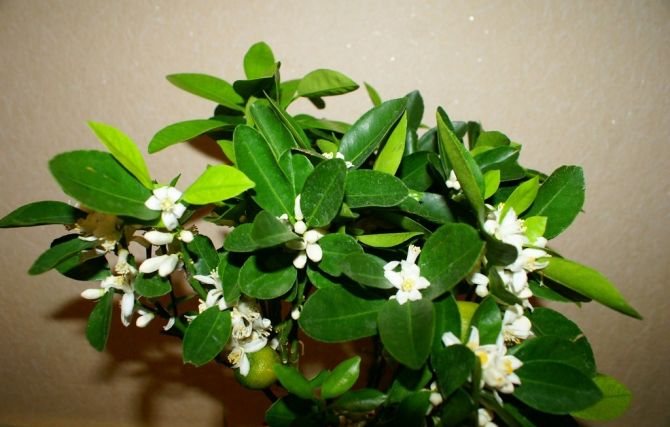

A lemon tree is not a geranium, it needs competent care and it is very difficult for a beginner to figure out what, how and when to do it.
With the effort and study of the rules for caring for lemon, you can get a pleasant result. Home-grown lemon will delight not only with its aroma, but also with delicious fruits.
Hello!
Today I want to tell you in detail how to grow a lemon from a seed at home. Yes, not just a lemon, but a real tree with fragrant and healthy fruits. Last year I wrote about growing tangerine from seed and in the comments there was a request to tell about lemon. There are some points to consider in order to drink tea with your lemons after a few years.
Gardeners are wondering how to make citrus blossom. Remember, the tree may lack vitamins, so vaccinations should be done. The best period for vaccination is from April to August, since at this time the sap is actively circulating in the trunk of the tree. After grafting, the lemon from the seed begins to bear fruit after 3 years.
Read next: What vitamin supplements for ferrets how to give
When wondering why lemon does not bear fruit at home, see if you are properly caring for the plant. It is important to pollinate flowers in a timely manner, provide the plant with light and moisture, which will allow you to get a rich harvest of fruits.
Graft
Correctly carried out grafting allows the lemon grown from the seed to bloom earlier, and delight with fruits 3 to 4 years after planting. The peephole grafting method is the most popular method. Inoculation by cutting occurs with the choice of a branch with a small number of leaves. In this case, two methods are used: "behind the bark" and "into the split".
How to plant lemon video
Vaccination is carried out in the phase of active sap flow - April - May. Strengthened trees with thick trunks and branches are subjected to the procedure. During this period, their bark is freely separated from the wood. There are 5 - 6 young leaves on the growth. Using a knife with a sharp blade will allow you to perform the operation quickly and efficiently.
Top dressing
Crown formation
Proper pruning from the first year of life also contributes to a good flowering lemon. Annual cutting of the tops leads to the final formation of the crown with 6 - 8 main branches, 3 - 4 years of development during the flowering period.
Blooming lemon photo
Sometimes, with a well-formed crown, it is possible to achieve early flowering in the second year of life. The formation of flowers begins on pods - thin branches.
Pulling branches
At the beginning of the period of sap flow, the branches on the citrus tree become flexible. Pulling branches with a soft wire is carried out in order to concentrate nutrients in them, which further contribute to the formation of flowers for the next year.
Blooming lemon photo
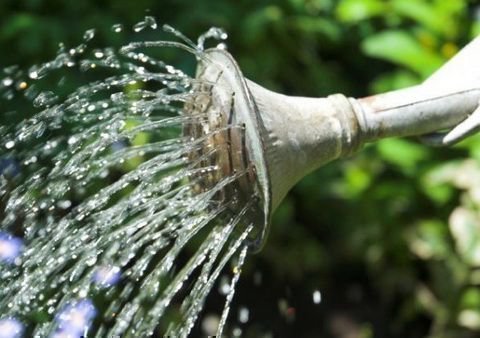

Giving the branches a more horizontal position allows you to achieve a spreading crown shape, reminiscent of a fountain. The plant is freed from the garter with the onset of November - at the end of the sap flow.
Crown formation
Blooming lemon photo
Pulling branches
Blooming lemon photo
Growing lemon at home
Before moving on to the question of the conditions for lemon flowering, you should at least briefly get acquainted with the methods of growing it. There are 2 of them: from a stone or from a cutting.
- When using the first method, take a few of the largest seeds from the freshly cut lemon.
- When choosing the cuttings method, one-year planting material is needed. You can take it from friends, or buy it.
- The stalk should be about 10 cm long with 3 leaves.
Regardless of the method chosen, there are general landing rules:
- It should be carried out in April - June.
- The future plant needs a capacity of no more than 10 cm in diameter.
- A hole is needed at its bottom so that excess moisture can be removed.
- Before planting a lemon, it is necessary to drain from small pebbles or expanded clay.
What a lemon looks like - photo
For seed growing, ordinary soil or special soil for citrus fruits is suitable.
When planting a plant by cuttings, it is better to put a layer of moss 1 cm thick on the drainage. Then fertile soil, leaving about 4 cm to the top of the pot. Then a layer of sand.
When planting, the seed should be deepened by 1 cm. Before performing this procedure, it is better to place the seedling in a root former solution for ½ day.
The future plant needs to choose a warm place. Otherwise, the pot with the bone planted in it should be covered with foil.
To root the seedling, put an inverted jar on the container with it.
During this period, the plant needs regular moisture, warmth and light.
Seeds usually germinate within a month or so later. It will take a little longer for the seedling to take root. So, even an inexperienced grower can grow a lemon at home.
What to do if flowers don't turn into fruits
The lack of fruit on a tree that looks completely healthy from the outside can puzzle even an experienced grower. A bad stock can be one of the reasons.Variety selection determines how much fruit can be harvested after the plant has bloomed.
In dwarf varieties, fertility is much higher than that of a full-sized crop. If, after transplanting, the tree does not want to bear fruit, you should wait another year. In most cases, lemon takes longer to adapt to new conditions.


A dwarf lemon produces more fruit than a regular lemon
If the reason is aged
Insufficiently mature plants can bloom only without fruit. This happens if a young culture has not yet matured. Trees from the age of five give a constant harvest, but young lemons do not show such results. The lack of fruit set is due to excess fruit or low nutrient concentration. In the cold, the plant feels bad and no vaccinations help it with the ovary.
If the reason is in the place of disembarkation
If the cause of the weakness of the lemon tree can be determined, the problem that has arisen should be eliminated without delay. Simple actions that do not require extra money or effort from a person will help to enhance the fruiting of citrus. The first step is to move the pot to the southern part of the building or room in which the lemon grows.
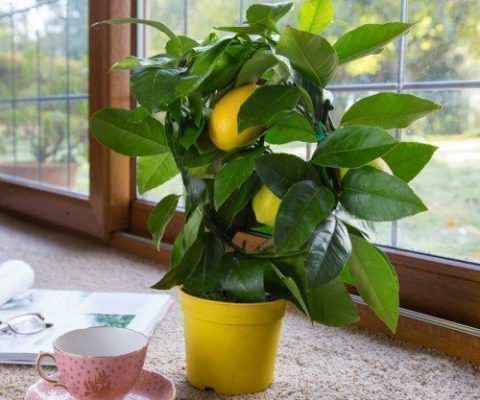

Lemon works best in the southern part of the room.
If the reason is in the soil
During transplantation, experienced florists recommend using a special drained soil. Closer to summer, it is necessary to increase the amount of fertilizer for the root system of the lemon tree. Excessive nitrogen concentration in the soil due to constant watering and without fertilization can harm the plant and lead to the fact that the inflorescences will soon crumble. Caring for ornamental plants is a simple matter, but it also requires full dedication from a person.
If the reason is pollination
Sometimes poor pollination is the reason for the lack of color and fruiting. What can be done to save the lemon tree? Pollination of flowers is part of a complex process that produces juicy fruits.
Without pollination, flowers are just barren flowers. They are beautiful, but completely useless for a grower who plans to harvest. To help the plant, you can pollinate all flowers again.
For these purposes, it is necessary to transfer pollen from one flower to another. With the help of a cotton swab, with gentle movements, a person passes through all the inflorescences. Such a procedure will be useful for plants in the variety of which the florist is not sure. It is necessary to carry out with a cotton swab without strong pressure, so as not to damage the plant.
Crown formation
Anyone who follows my blog will know that I consider right the most important factor in citrus fruiting. Many resources write that you can wait for flowers only on branches of the 5-6 order. This is true, but let's see why this is so. I have never seen that shoots of such orders were fatty: that is, they are powerful, vigorously growing, which are directed mainly strictly vertically. They usually appear on the trunk or branches of 1-2 orders of magnitude. If they are not removed, pruned and left to grow vertically, they usually lay the same fatty shoots in the buds. If you don't want to remove such an escape, then you can bend it. Even a bent fat shoot in the future will already give normal shoots with a chance of laying flower buds. The more we tilt horizontally, the more chances. That is, we conclude: vertical shoots are aimed at intensive growth, while horizontal shoots are aimed at fruiting. It is worth bending the branches when they are not yet ripe, very elastic and allow you to bend them in any direction.
Why are there no buds?
Lemon trees do not always please the owners with flowering. There can be a number of reasons for this: from improper care to the presence of pests.
Pests
Most often, lemon trees are susceptible to attacks by spider mites, scale insects, thrips and soil fleas.
Spider mite
Spider mites are small pests that are difficult to see with the naked eye.The tick size is 1-2 mm, it settles on the underside of the leaf plate, most often it infects leaves and immature shoots.
Signs of a tick:
- Small light dots on the leaves.
- Rolled leaves with cobwebs on the back.
There are several ways to get rid of a tick:
- Spraying with sulfur.
- Washing the leaves.
- Ultraviolet lamp.
- Processing the leaves with an alcohol solution.
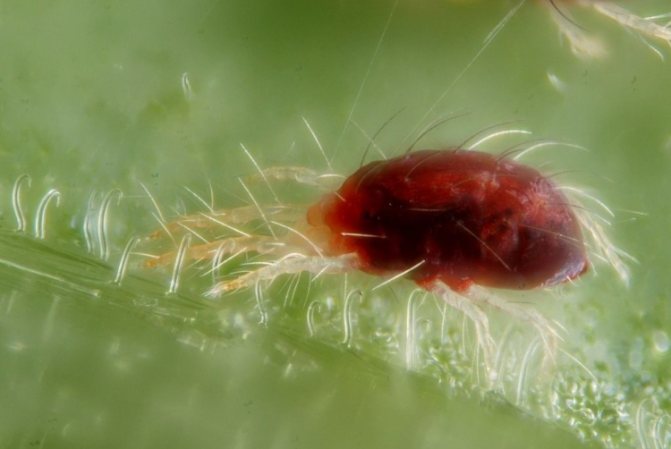

Shields
Scabbards are the most dangerous pests. When they appear on the tree, convex oval plates (about 4 mm) appear. There are several varieties of scale insects, but they are all equally dangerous to the plant. This pest is very difficult to get rid of because its shell is covered with a wax shield that protects it from the effects of chemicals.
To destroy scale insects, apply:
- Chemicals (Aktara, Aktellik, etc.).
- Soapy water.
- Infusion of tobacco.
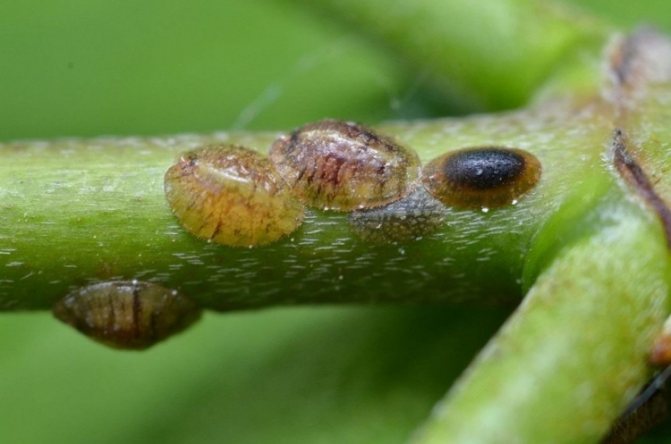

Thrips
Thrips are small insects that suck juice from lemon trees. Their appearance is easily recognized by the silvery streaks that form when the parasite moves from leaf to leaf.
To remove thrips, use the same means as for the destruction of spider mites.
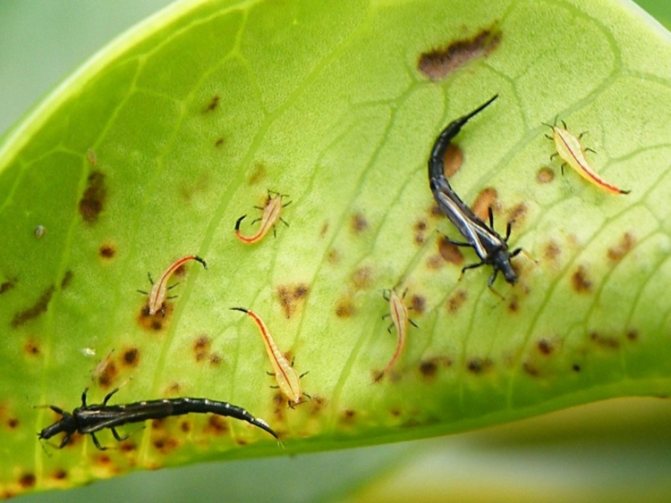

Soil fleas (earthen fleas, podura)
In the soil where the lemon grows, puffs can appear. It is a small, prancing white insect with an oval body. The average length of a flea is 1-4 mm. The appearance of these parasites is associated with excessive watering and excessive soil moisture.
Earthen flea beetles can be seen when watering on the surface of the soil or on the base of a pot. Pests can actively jump in different directions. Podura feed on decayed parts of roots and non-decayed plant debris., but easily switch to healthy roots, which can lead to plant death.
Why does old lemon stop bearing fruit?
Why doesn't an old lemon bear fruit at home? Experienced flower growers convince that a decorative tree that has been bearing fruit for more than a year can suffer from the most trifling problem. If the temperature is too high during the autumn flowering in the room where the lemon pot is, the inflorescences will either disappear or not appear at all. Dry air causes the soil in the pot to become a hard ball. As a result, the plant lacks moisture even with normal watering. The root system is unable to feed the inflorescences, and they simply fall off. The optimal temperature regime in the room should not exceed 20 degrees Celsius.
In winter, experienced florists recommend giving the plant a rest. You need to cut partially or completely weak stems or a tree that is sick.
Small white inflorescences bring a lot of joy to a person, especially if the lemon has bloomed for the first time. In no case should you leave all the flowers that appear. Closer to spring, the lemon is taken out into the open air, where the plant even rises its own temperature. The lemon comes to life, because the spring bloom is characterized by a large number of white buds. In order to avoid a reduced fertility of the culture in the future, excess flowers are cut from the very first flowering.
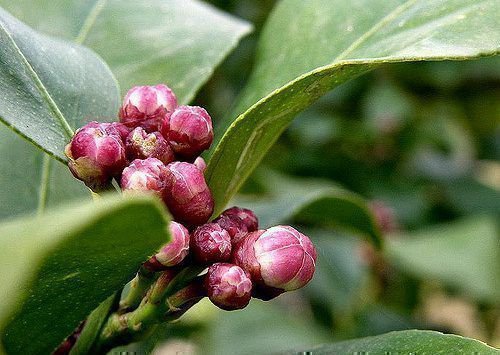

Extra buds should be removed
What affects fruit ovary
Lemon is capable of producing up to fifty fruits per year, depending on the age of the plant and the conditions that the grower was able to provide. The organization of watering, the place where the pot stands, the humidity of the air and the quality of fertilizers, predetermine the growth of the lemon. Inflorescences appear only on a healthy tree, which is pruned and transplanted in time. If lemon trees do not begin to bear fruit, then:
- in a room where citrus grows, an increased air temperature;
- there are many inflorescences on a small tree that are not cut off;
- improper watering (lack of food).
When a lemon is "naughty": the reasons for the lack of flowering
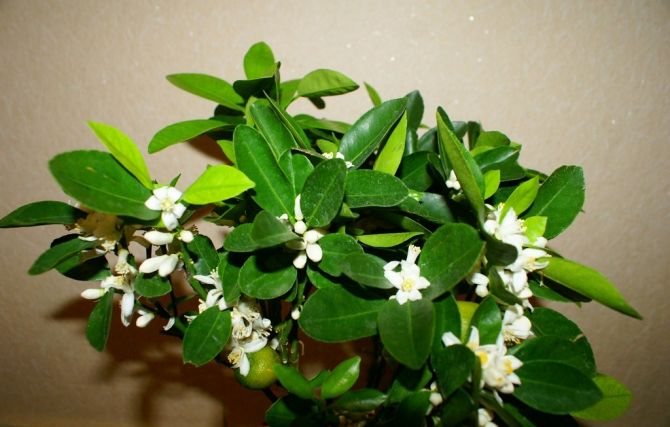

Often, the lemon refuses to bloom due to systematic errors in agricultural technology and the lack of mineral fertilizing, when the plant simply has nowhere to take the components for laying the buds.
In some cases, the cause is pest infestation and the development of diseases.
The lemon tree does not bloom at home due to one or a combination of the following factors:
- Improper watering and lack of transplants;
- Content in unsuitable conditions;
- Mineral starvation;
- Insect pests and fungal diseases.
If you keep lemon on the windowsill not only as an ornamental crop, but also for the purpose of obtaining fruit, it is advisable to create a suitable microclimate for the lemon.
What to do when blooming in autumn?
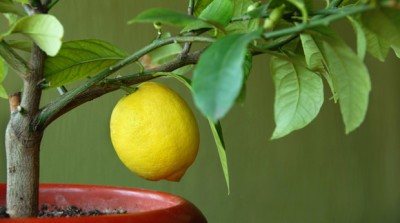

Indoor lemon can bloom and bear fruit all year round.
Flower buds form throughout the year, but the main peak is, of course, in the spring.
Has the lemon bloomed in the fall? What to do? If a tree bloomed in autumn do not break off the ovaries. The plant itself will decide to drop them if it realizes that now is not the time for this. Often buds, flowers and fruits can be found on adult plants at the same time.
It is autumn and winter - the hardest time for indoor lemon. Due to improper maintenance, many plants die at this time. And only care and proper care can help the plant to endure autumn and winter.
To get fruit from your indoor plant, you need to be patient for several years. Protect and properly care for in the autumn-winter period, take care in the spring and summer.
Lemon varieties
There are many varieties. Below are some of them that are suitable for growing in a house or apartment:
- Pavlovsky - differs from other varieties in its large fruits, which can reach 500 grams, has a sweetish taste, and the tree of this variety is quite large - more than 2 meters. This variety is distinguished by fragrant leaves. The scent is so sharp and strong that the whole house will be filled with it.
- Meyer - a hybrid of lemon with grapefruit, has a sweet and sour taste, a small tree with a rich harvest, the size of one lemon can reach 150 grams, blooms in bunches, there is a seasonal dormant period.
- Ponderosa is a hybrid of lemon with grapefruit, it has a bitter taste, as well as the presence of a large number of seeds. Pleases that it constantly blooms. According to the people who grow this type of lemon, it is a very grateful plant and quite unpretentious.
- Genoa is a medium-sized tree that gives a large harvest already for 4-5 years of life. Fruits with delicate pulp, have a sour, aromatic taste. You can also eat the rind. This variety is considered not whimsical. For 2-3 years, the seedling is already blooming.
- Jubilee - a medium-sized tree, considered a variety that gives a rich harvest, the fruit is distinguished by its thick skin. Very suitable for growing in a house or apartment.
After the stage of choosing the variety has been passed, it is necessary to proceed to the very planting of the seeds in the pot.
Varieties that are suitable for growing in a house or apartment: Pavlovsky, Meyer, Genoa, Yubileiny, Ponderoza
Read next: How to properly feed rabbits at home
Their mass, and very many varieties can be grown indoors. Differences between varieties are usually in yield and fruit quality. The most famous varieties (descriptions and harvest dates refer to trees grown from seedlings):
- Pavlovsky is a classic, a very old variety, perfectly adapted to rooms, relatively well tolerates dry air and low light, which is inevitable in an apartment. The plant is large, up to 2 m tall, yields fruits for 4 years, yield up to 40 fruits per year.
- Eureka is a relatively short lemon. Average yield, blooms early, in the third year, fruits of medium weight, tasty, very common outdoors in Europe.
- Meyer is a hybrid of lemon and orange. It is very popular as a pot plant.The fruit is larger and sweeter than lemon. Very productive, bears fruit for 4 years (we are talking about a tree grown from seeds).
- Novogruzinsky is a large tree, fruits for 4-5 years, tasty and aromatic, without seeds. Productivity is high (up to 200 per year).
- Maikop - it has a high yield, up to 300 fruits per year, rather large fruits, the variety is unpretentious.
- Genoa is another low variety, up to 3 meters (in rooms up to 1 meter), fruits - in the fifth year, up to 50 fruits per year, medium-sized fruits, but tasty, blooms profusely.
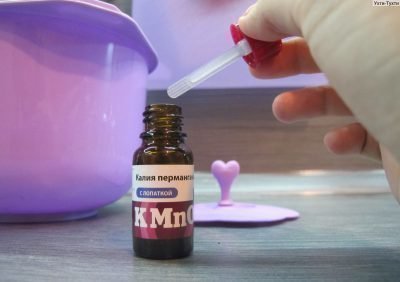

Meyer's lemon is in bloom.
Application of inflorescences
Lemon flowers are widely recognized in cooking. They have become not only a decoration for the most exquisite dishes, but also an important ingredient. For example, in the East, lemon juice is widely used in the preparation of sweets and desserts, while Europeans use lemon flower water as the basis for alcoholic and non-alcoholic cocktails.
Lemon inflorescences in folk medicine
Lemon flowers are most widely used in folk medicine, they are an effective remedy in the fight against many diseases:
- Lemon is used for insomnia and menstrual pain. This is due to the aromatic and sedative elements in the flower. The best way to use this flower is to make tea with it.
- Citrus is effective in the fight against hypertension and emotional arousal. Mineral water infused with lemon blossom is ideal for relieving tension and stress.
- Lemon fights nausea and stomach pain. Tea based on lemon flowers and mint will help here.
- The plant will also help with a cough. To soothe a cough, add a few lemon blossoms, some honey and cinnamon to the tea.


Lemon Blossoms Added to Tea May Help Relieve Coughs
To make tea or water with lemon flowers, you must choose the ones that have just opened. Then they must be rinsed and dried.
Fertilization
The flower pot has a very limited supply of nutrients, so the lemon has to be fed. The older the plant, the more fertilizers it needs, young plants are fed after a month and a half, and adults - after 3 weeks. For active growth, an increase in green mass, a tree needs nitrogen, for flowering, the formation of ovaries, the ripening of fruits, phosphorus and potassium are needed, in addition to them, the plant needs iron, calcium, magnesium, manganese and other elements. Therefore, lemons are usually fed with organic and mineral fertilizers, alternating between them.
From organic dressings, citrus fruits respond well to a solution of manure infusion (it must be diluted with water 6-8 times so as not to burn the roots), to an infusion of birch or quinoa leaves. Mineral complex fertilizers are best bought and diluted according to the instructions, and then add more water just before use. Usually, superphosphate, ammonium nitrate are used for mineral dressings, dissolving them with water.
Top dressing is carried out in two ways - root and foliar. Foliar dressing, that is, spraying a plant over the leaves with a fertilizer solution, is usually carried out when there is an acute shortage of some elements, they are quickly absorbed through the leaves of the plant. Regular feeding is carried out by watering the plant with a solution of fertilizers (root feeding), they are carried out after the usual watering with water.
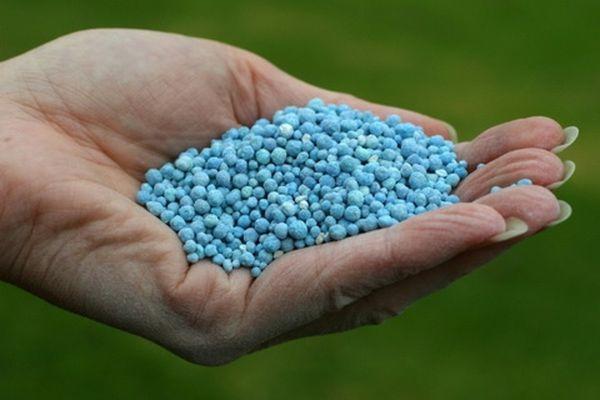

It is desirable to fertilize the plants minimally, here the basic rule is that a deficiency is better than an excess. The lack of any elements will be noticeable in appearance and general condition, growth rate, color of leaves, it is easy to fill it. But an excess of fertilizer can lead to a painful condition, slower growth or even death of the plant.
Padding
Banning is another method aimed at inhibiting vegetation and the outflow of nutrients accumulated in the leaves.This simple technique can be performed both on the trunk and on separate strongly vegetating skeletal branches. To do this, you need a soft copper wire, which we tighten around the branch so that it cuts a little into the bark. As it grows and thickens, the cut will be deeper, therefore, periodically, the constriction can be loosened so that there are no ugly nodules and build-ups, or it can be shifted slightly higher or lower.
Photo
Below you can see a photo of a blooming lemon:
Diseases and pests
Diseases and parasites also interfere with flowering.
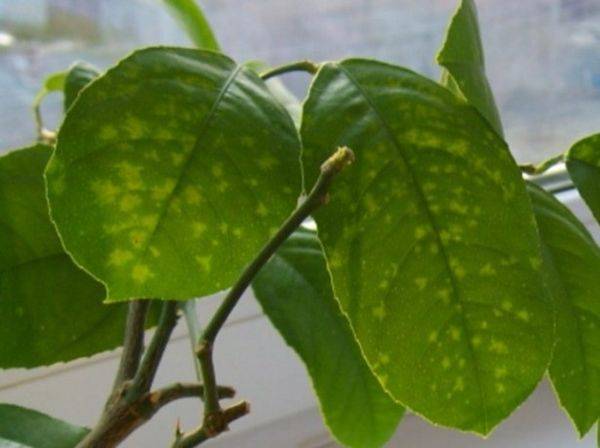

Fungal diseases can develop due to too high humidity levels and are treated with copper sulfate (late blight), soap solution (soot fungus) and Bordeaux liquid (mold).
Pests (spider mites, thrips, scale insects) must be removed mechanically or washed off from the leaves with soapy water. You can also use a variety of insecticides.
grow-

